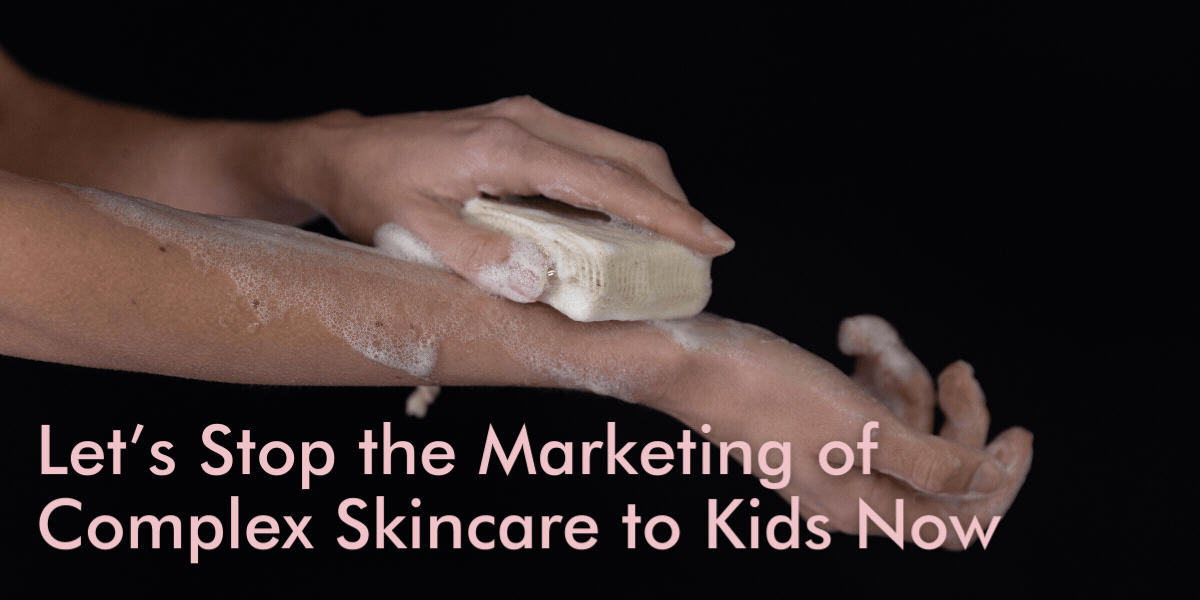Most of us have been led to believe that soap is bad for the skin and it’s bad for bathrooms. To set the scene, let me take you back to the 80s (Can you tell that I’m a child of the 80s!) (and sorry it’s a youtube clip so there may be another ad or two – but it’s worth it!
The thing is, while we were being marketed that plastic bottles were much better, the reality was brands were the real winners because liquid soap is a lot cheaper and easier to produce.
As a soap maker for 10 years, I can tell you that traditional soapmaking is more like an art form – you have to respect the ingredients and give the soaps much time and love to cure.
And it’s the ingredients that we use that really sets our soaps apart from the soaps of the 80s and the reason why we believe that they are truly the best thing you could be using on your skin, from top to toe.
So let’s answer common hesitations most people have about using solid soap:
Myth 1: Solid soaps leave soap scum:
Thinking back to that ad, you can see where this common misconception comes from. Yes, there is a lot of soap out there that causes soap scum but it’s because they use tallow (animal fat) which has been a common soap ingredient because it is cheap. We use only pure plant oils so ours leave no white streaks.
The only reason you’d get mess from our soaps is if you are using too much or not storing them properly, which is where our
cotton soap savers come in:
Myth 2: Solid soap dries the skin
So most commercial soap making includes a step where you extract the naturally occurring glycerine from the product to then use other products. We don’t do that. We also use a method called “superfatting” where we add as much extra plant oil as possible to really beef up our soaps’ moisturising properties. And because we use plant oils such as
olive oil, macadamia oil and avocado oil which are super moisturising to begin with.
Myth 3: Solid soap causes irritation and soap-free products are best for sensitive skin
Obviously whenever we talk about sensitive skin, if you do have any concerns please reach out to your doctor first. We can only provide general information.
But hopefully I'm starting to convince you that not all soaps are made the same. The problem with most supermarket bought soap is that they contains sulphates that are super drying for the skin. Added to that, the manufacturers of these types of soaps purposefully remove the naturally occurring glycerine made during - the result? A very drying final product. No wonder this type of soap is not recommended for anyone with skin sensitivities or irritation.
As described above, our soaps are nothing like the supermarket stuff and the ingredients that we use have been specifically selected because of their nurturing qualities for the skin.
Got cranky skin? We'd recommend checking out our
Sensitive skin cleanser
Myth 4: Soap is unhygienic
As a soapmaker, this is one of the more interesting myths out there for me because soap is the original germ buster. The simple act of washing hands with soap and water is considered a massive breakthrough for human development, just as much as the introduction of antibiotics and anaesthetics.
We get it - the soap sits in the shower or on the side of the sink and is used by many people. But I think after reading the next myth busting section, you'll agree not much can live on the surface of solid soap, which can't be said for the plastic bottle equivalent.
Myth 5: Solid soap doesn’t clean the skin properly and doesn’t protect against viruses or bacteria.
Now for me to explain this one properly, I'm going to have to get all scientific - but I'll try and keep it fun and fascinating! Soap molecules are like little pin-shaped superheroes with a hydrophilic head (water lover) and a hydrophobic tail (water hater). When you mix soap with water, these molecules come together to form micelles, which are like teeny-tiny soap bubbles. The heads of the soap molecules stick out of the micelles, while the tails hide inside.
Now, here's where the action begins. Nasty pathogens such as bacteria and viruses have sneaky lipid membranes similar to those micelles we mentioned earlier. These membranes are like fortress walls that protect the baddies and help them infect our cells.
But guess what? Soap molecules are here to save the day!
When you wash your skin with soap and water, those soap molecules surround the pathogens on your skin. The hydrophobic tails of the soap molecules dive into the lipid membranes of the pathogens, causing them to go "BOOM!" The membranes rupture, releasing important proteins into the water around them. And just like that, the bacteria are vanquished, and the viruses become useless—ka-pow!
Soap's Additional Benefits:
Soap doesn't stop there. It also helps whisk away dirt and any tiny remnants of defeated pathogens from your skin. The micelles created by soap trap these particles, making it super easy to wash them away with water. And here's a fun fact: soap molecules break the chemical bonds that make bacteria, viruses, and grime that stick to surfaces. It's like giving them a slip'n slide ticket, so they can glide right off your skin!
Myth 6: You should not use just one soap on your face and body:
This one is pretty easy to answer - skin is skin, despite what many beauty brands out there would want you to believe. How could they sell you that facial cleanser, body cleanser, eye cream, foot cream, elbow cream, hand lotion etc.... if really all you needed was a good quality soap!
The more products they sell to you, the more money they make 🤔
Soapy hugs,
Emma x





